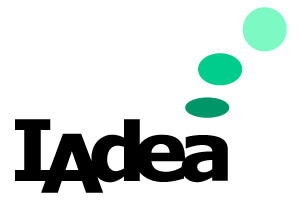
In today’s enterprise landscape, Android has become the operating system of choice for a multitude of corporate-owned devices, including kiosks, digital signage, conferencing systems, and rugged handhelds. However, the open nature of the Android Open Source Project (AOSP) allows each vendor to implement their own customized version, often without a standardized commitment to security patches or feature upgrades. This fragmentation leads to inconsistencies and vulnerabilities across devices. Deploying such devices onto operational technology (OT) networks without stringent security measures is akin to “sweeping the trash under the rug,” exposing enterprises to significant risks. Recognizing this challenge, IAdea embraces the Microsoft Device Ecosystem Platform (MDEP) to bring uniformity, security, and manageability to Android devices in enterprise settings.
Reimagining Android for Enterprise Needs
Chris Johnson, Senior Director of Android Product and Engineering for MDEP at Microsoft, articulates the core issue in a recent podcast (link provided at the end of this article):
“Android for enterprise is a little bit broken. It’s fragmented, inconsistent, and hard to secure and manage at scale.”
MDEP addresses this fragmentation by infusing Android with Microsoft’s enterprise-grade principles—robust security, comprehensive manageability, and a reliable long-term support model—transforming it into a platform suitable for enterprise demands.
Security and Compliance by Design
Security is paramount in MDEP’s architecture. Unlike generic AOSP builds that depend on OEMs for updates, MDEP ensures:
- Monthly security patches
- 2–4 annual feature updates
- Lifecycle support aligned with silicon providers
Johnson emphasizes:
“Core to our DNA is the ability to update and keep devices supported. We provide those updates directly to the OEM in a monthly fashion.”
This centralized approach allows IT Service Managers (ITSMs) to maintain fleet-wide compliance and adopt zero-trust models more effectively.
Enterprise-First Manageability
MDEP delivers the consistency that IT departments require:
“We provide a consistent, secure, scalable Android foundation. It’s built to reduce partner investment in base platform plumbing.”
With native integration into Microsoft Intune and compatibility with Microsoft services, MDEP streamlines provisioning, remote diagnostics, and policy enforcement, enabling ITSMs to manage diverse device fleets efficiently.
Purpose-Built Device Ecosystem
MDEP is not a one-size-fits-all solution. OEMs enter into a platform distribution agreement, aligning their roadmaps with Microsoft’s support and patching commitments:
“If it’s an MDEP-supported chipset, we support it for the lifecycle of the silicon provider.”
This ensures long-term viability, even in specialized hardware deployments such as Teams Rooms, digital signage, and kiosks. Microsoft handles the OS foundation and validation, allowing OEMs to focus on differentiation, such as performance tuning or AI-enhanced features.
Accelerated Roadmap and Innovation
By controlling the OS layer and decoupling it from Google Mobile Services (GMS), MDEP enables faster, more controlled releases:
“We feel that we can go potentially even a little faster [than Windows], due to the flexibility in the Android codebase.”
Enterprises benefit from a predictable cadence of releases, including long-term servicing branches, while also being first to market on platforms like Android 15.
Final Word: A Strategic Shift for Enterprise IT
Johnson concludes:
“Our commitment [to Android] is serious, strategic, and accelerating.”
For ITSMs aiming to move beyond the chaos of fragmented AOSP implementations and embrace a platform built with enterprise outcomes in mind, MDEP offers a compelling, forward-looking alternative. It’s not just Android—it’s Android reengineered for the enterprise.
For a deeper understanding of MDEP and its advantages, listen to the MDEP (Microsoft Devices Ecosystem Platform) Explained: Microsoft Teams Android devices and beyond, a Microsoft Teams Insider podcast.

